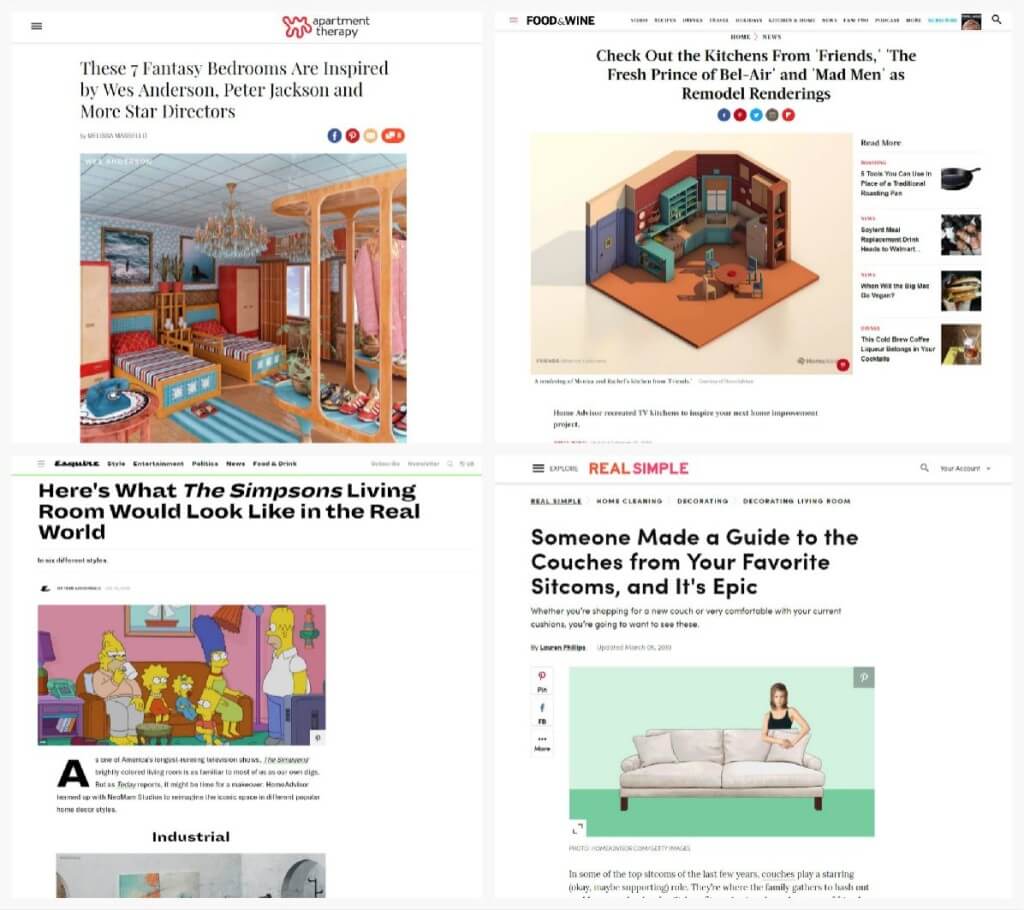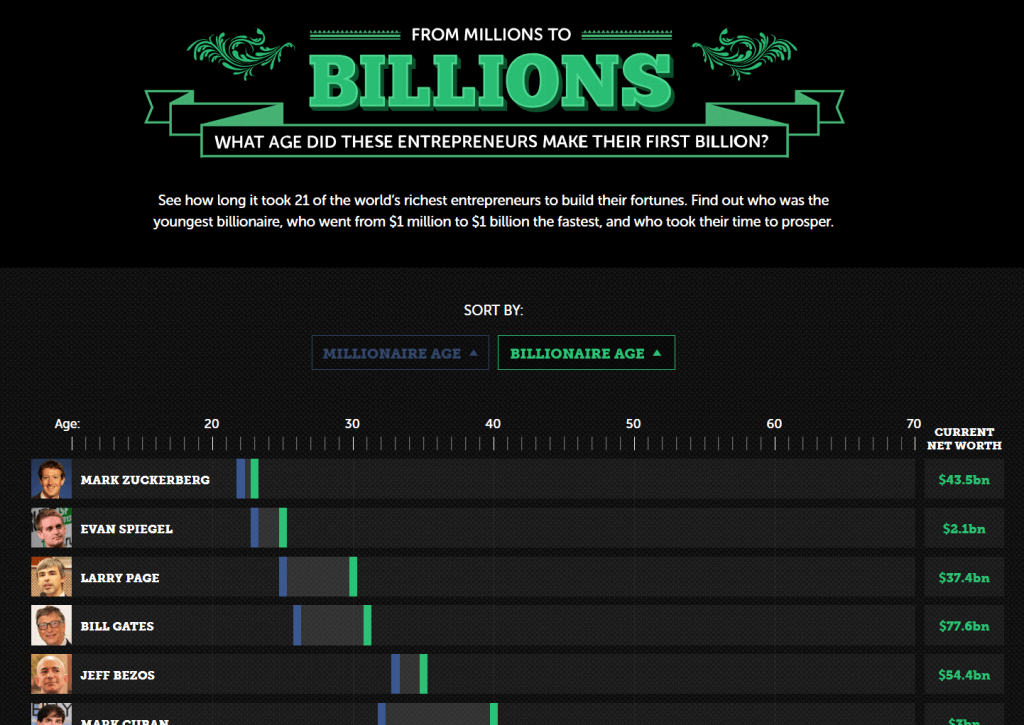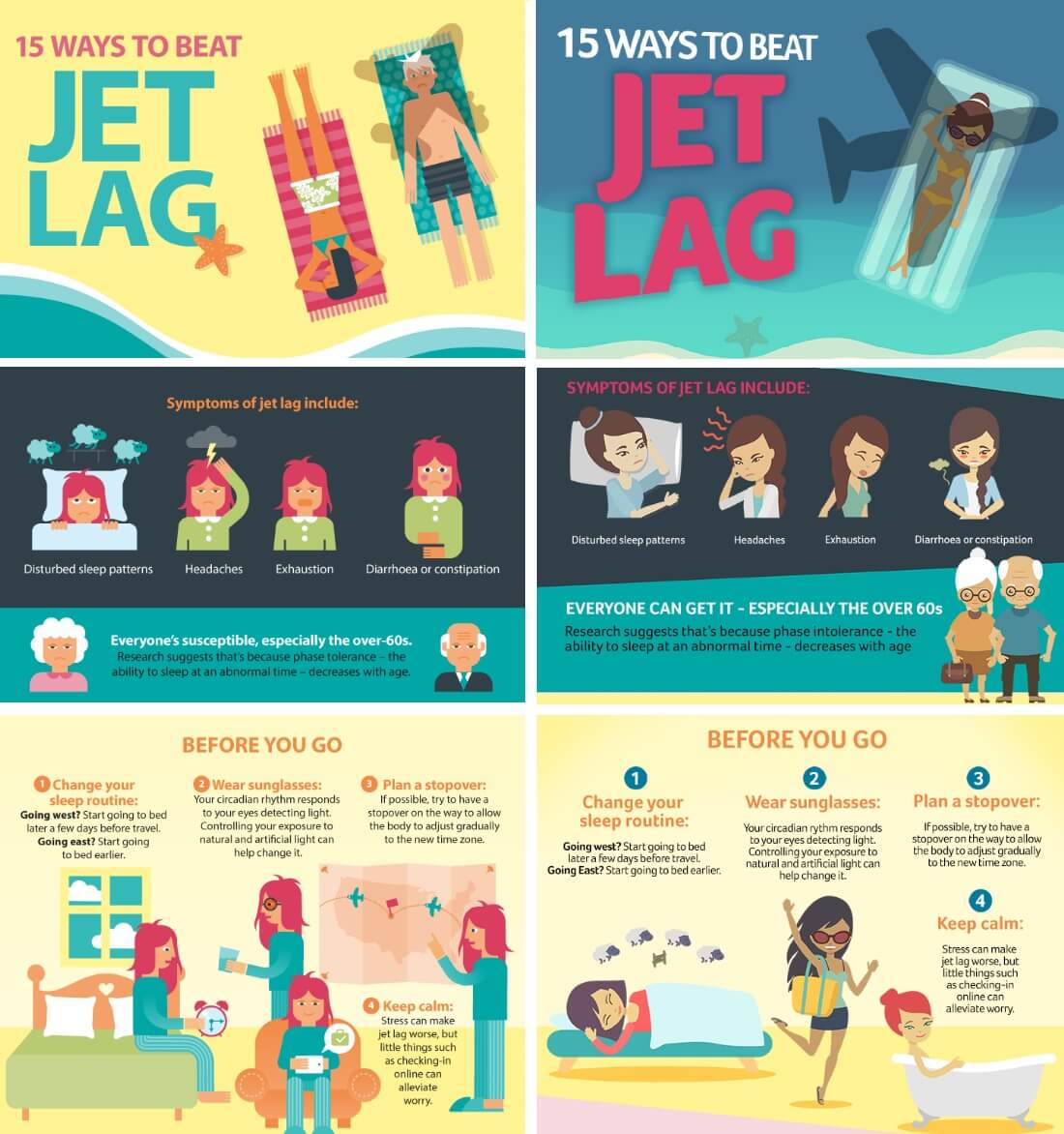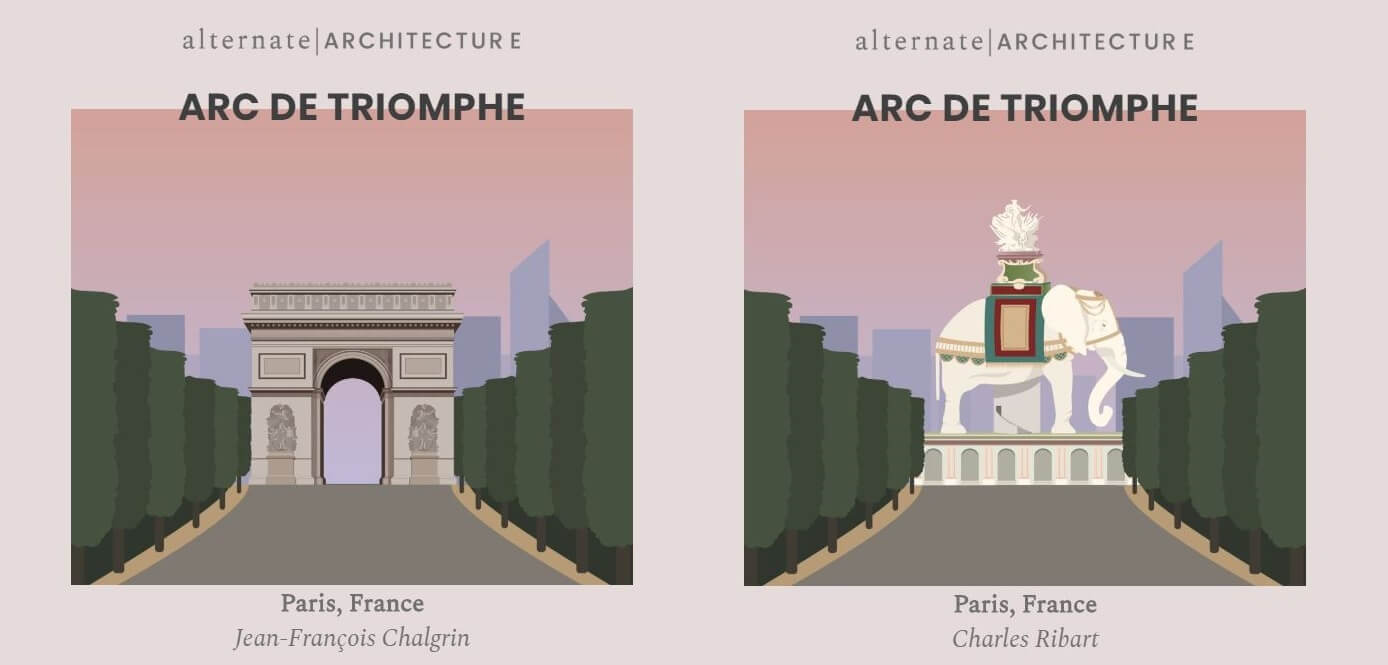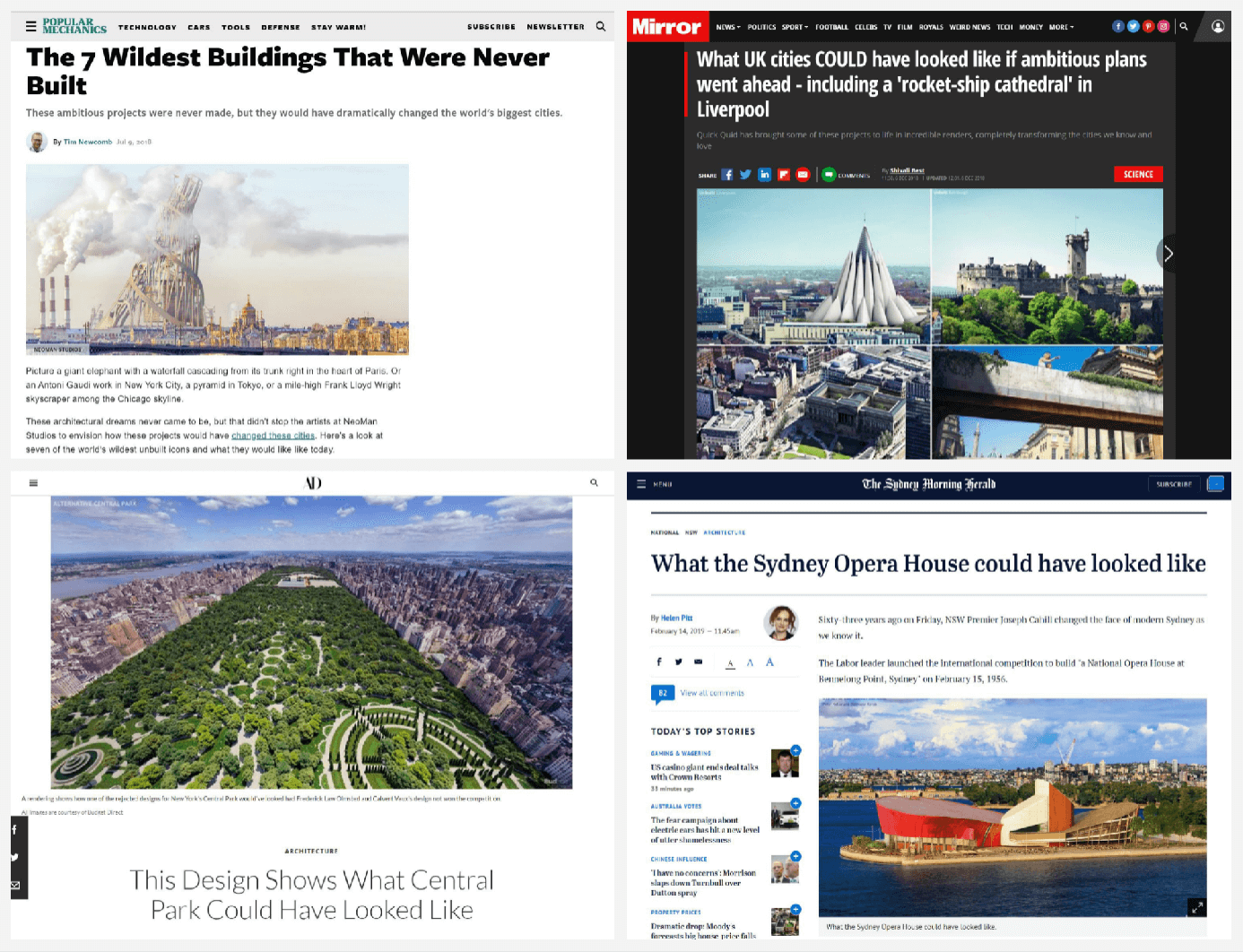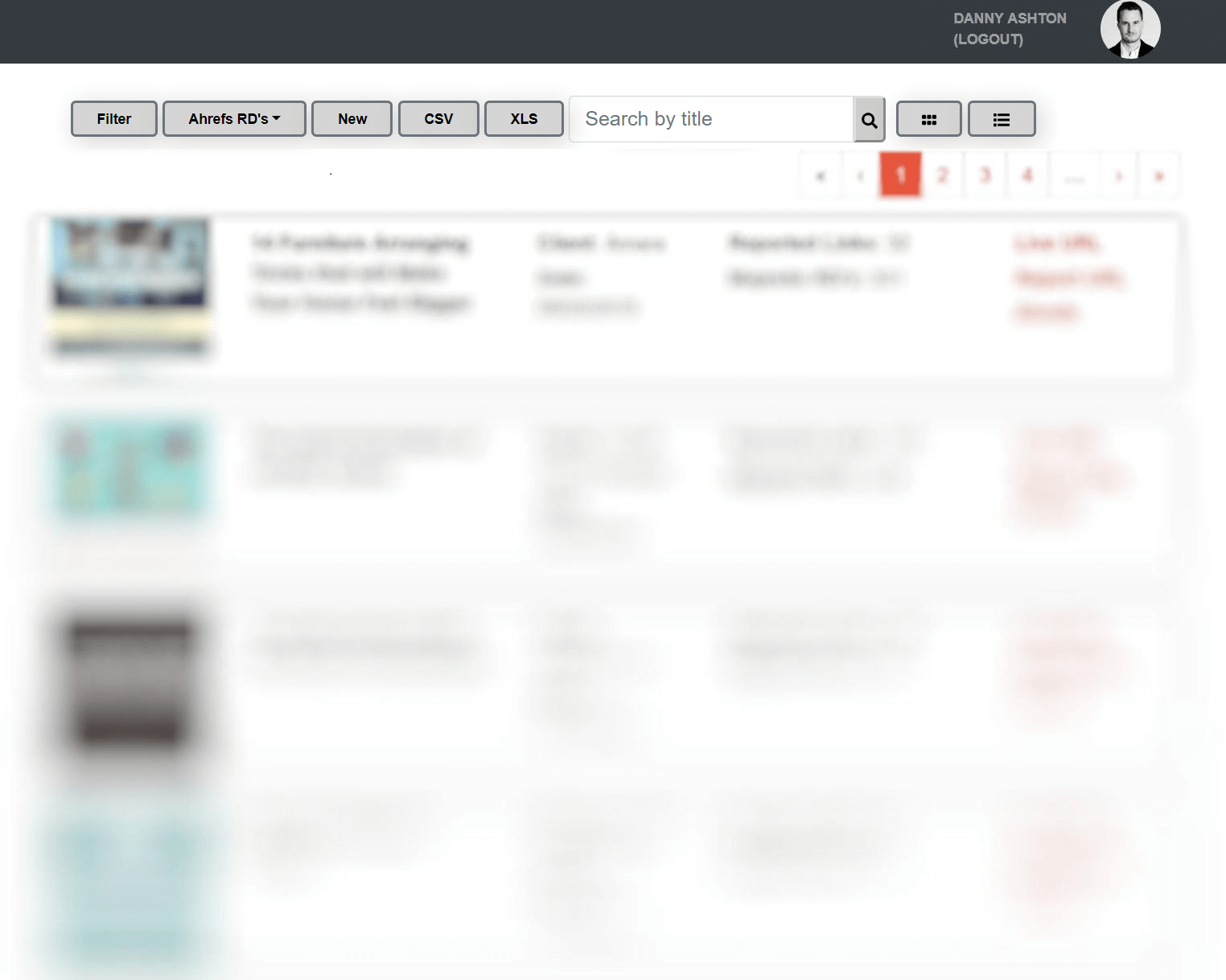Coming up with content ideas that will make anyone care enough to link is hard work.
When I first started NeoMam, every project we produced was a result of one of my ideas.
As the years went by, I got everyone involved in generating ideas but I was always the one deciding whether an idea had potential to attract big links.
If I wanted to scale the agency, it was very clear that I needed to let go so I trained up people who were dedicated to just this step in the process.
But last year everything changed when Mark Johnstone hosted a virtual workshop on idea generation for the team and I joined them. His course reignited my passion and I decided it was time to get involved in client work again.
Whilst it reduced my time available for marketing activities and other founder stuff, it’s been great to get back to doing something I love doing – similar to how Gisele feels about being back to promoting content.
I’ve always liked to use frameworks to avoid the time-wasting rabbit holes and all-too-common pitfalls of idea generation so as soon as I was back, the first order of business was to update them.
In our early days of infographics, I found that identifying different types helped me generate new ideas. Later on, I was certain that uncovering new formats was key to moving our agency towards ideas we have never thought of before.
It took me a few weeks to go through past campaigns and review content produced by other teams, but after all that, I was ready to update our framework.
Throughout the 4000 words that comprise this guide, you’ll learn the unspoken rules I follow at NeoMam to ensure every campaign has the very best chance to succeed.
I will share with you the NeoMam rules for idea generation and I know that you will not agree with all of them.
That’s why I made sure to include real-world examples to accompany these do’s and don’ts and hopefully that will help you at least understand the reasons behind the rules.
If you have experience creating content for links, then you’ll find value in our experiences as this is not a newbie’s guide.
That being said, if you’re just getting started with link building with content, please read on; these rules will help you avoid some of the most costly ideation mistakes everyone makes at least once.
Let’s get to it.
DON’T chase the silver bullet (and try to find an idea that will attract links AND increase social media followers AND sell your product, all at once)
Have you ever tried to come up with a content idea for your business that everyone (from the PR team to the leadership team) would love?
If so, you’ll know how painful it can be.
Every department will want to add their message and fulfill their goals but not everything fits in together so everyone compromises somewhere.
The end result?
A piece of content that is either boring or confusing and that publishers won’t touch as it offers no value to them.
There’s nothing wrong with creating content to support your customer’s journey or to increase the digital coverage of PR campaigns, just don’t produce a Frankenstein that doesn’t accomplish either of the goals.
Let me show you what I mean.
Here’s a piece of content aimed at building links that was produced with the additional goal of fitting nicely within the company’s sales funnel:
The client was a company that provided ferry trips to Calais. The number one goal of the project was to build links but the different stakeholders added their own requirements.
The idea? The ultimate guide to a booze cruise to Calais that was heavily branded and could easily pass for an advert.
The result?
And how many new customers do you think were converted after reading this guide? You’d be right to guess zero.
The problem with a strategy aimed at meeting multiple goals is that you lose focus and are likely to get mediocre results across the board.
When creating content with the goal of attracting links, you ought to stick to that one goal if you want to achieve the best results possible.
Getting links with content is hard so don’t make it even harder by piling on lots of other metrics for success.
Tip: Keep it simple. Focus on generating a content idea that attracts the types of links you want, and measure its success in terms of the links it gets.
DO pick content ideas that will leave a positive impression with potential customers
I’m sure you read the above and thought ‘come on, Danny, you need to think about the wider market here, we don’t just want “linkbait” that has nothing to do with us! We want to produce content that is relevant to our brand so that it will help us build relevant links!’
And you would be correct.
However, many people misunderstand what relevant content is and get caught in some technical equation trying to define the exact area where a content idea (and the links that follow) will stay 100% relevant to their business.
What comes next is an arduous brainstorming session where SEO and content teams try to come up with ideas that will be perfectly relevant to their business and that will only attract perfectly relevant links back to their site.
In many cases, this is the moment when common sense rolls over and dies.
Let me give you an example.
Imagine your company sells plane tickets.
You want to create a piece of content that will be relevant to flights, airlines and flying so you can build links from sites that cover those three topics – ideally using those terms when linking back to what you’ve created.
Now, the travel space is incredibly saturated online and there’s a lot of competition when it comes to attracting hard-to-get links from travel publishers so you need something that will cut through the noise.
So you come up with this idea: “How to Survive a Plane Crash“.
Relevant to flights? Yes. Airlines? Yes. Flying? Oh yes.
But do potential customers want to see a piece of content about plane crashes when they are about to book a flight? And do you want people to think of a plane crash when looking at your logo?
I am going to guess your answer to those questions is ‘no’.
This piece of content might be relevant to your industry but it’s going to give a crappy impression to your customers.
Even if this idea built loads of links (it didn’t) I don’t think it would be worth the potentially negative long-term effects this would have on your customers.
I use a super simple question to evaluate if ideas make sense for our clients: Does the idea leave a positive impression on our client’s customers?
The content idea sweet spot
My recommendation is to always make sure the content will leave a positive impression on customers AND can also earn lots of links along the way. It’s the small but perfect sweet spot we want to work in.
The great thing about this way of looking at content is that it gives you a lot of creative freedom but also stops you doing absurd ideas just for the sake of getting links.
An idea that doesn’t make sense to your customers, won’t make sense to a journalist – no matter how closely related to your target keywords it is.
We nearly made this mistake with one of our clients who serves customers who are architects. We wanted to create content that was relevant to architects and that would attract links from architecture publications.
We came up with the following idea: “Ugly Architecture: The World’s Most Hideous Buildings, Redesigned”.
On the face of it, this seems like a pretty decent idea that is relevant to architects.
Now, let’s ask the question: Does the idea leave a positive impression on our client’s customers?
Probably not.
In fact, it could annoy the hell out of them. This idea boils down to “look at what a crappy job these architects made and how we “non-architects” could do a so much better job!”
Not exactly the message our client wants to share, no matter how many links it could attract.
Tip: Before settling for an idea, ask yourself “What would I tell a journalist or a customer who asked why we’ve created this piece of content?” If the answer to that question is “to build relevant links” then you need to go back to the chopping board.
DON’T get caught up with the keyword you want to rank for
It’s not a bad thing to create something that gets links and ranks for your target keywords.
It can be a great tactic, especially if the content leaves a positive impression with your customers.
To show you an example of this, here’s a project we produced for an online pharmacy trying to increase their traffic to ED medication: How to last longer in bed.
This project was built around the keyword ‘how to last longer in bed’, which is very valuable for our client:
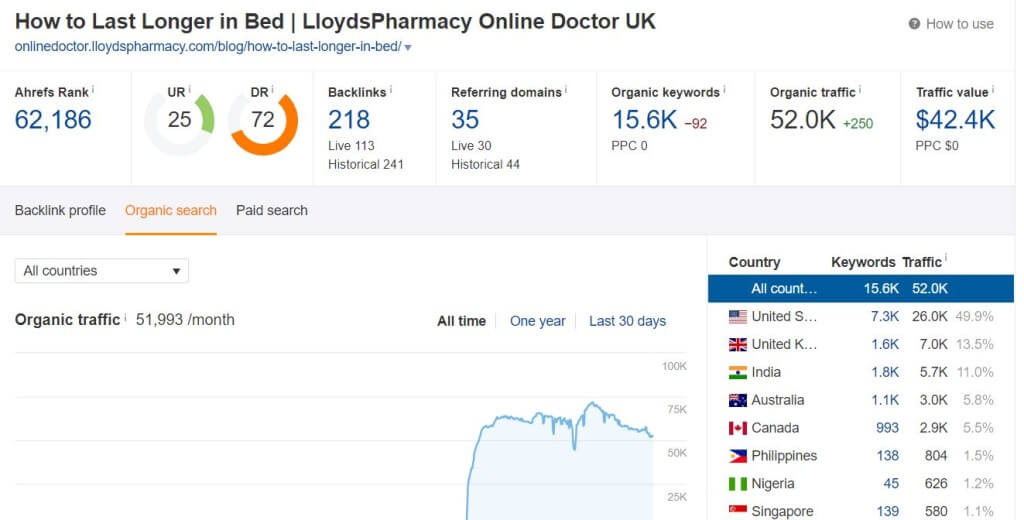
The problem with this strategy is that there is a limited amount of relevant keywords that are also highly linkable topics. This is especially true for high-volume/high-value sectors like finance and travel.
You should definitely create content for keywords that you identify have high search volume and these pages can become a valuable pillar of your funnel. This must be a key part of your on-site strategy but don’t let this be your only way to generate content ideas that will attract hard-to-get links.
If you restrict yourself to only keywords for mortgages, payday loans or cheap flights, do you really think there is a treasure trove of keywords that both have high-volume and would make link-worthy content?
“X Amazing Insurance Claims – You Won’t Believe Number 3!”
Tip: Don’t let keyword research become your main tool for coming up with linkable content ideas.
DO identify content ideas that perform well for the publishers you want to get links from
It’s far better to forget keyword data when you start thinking about ideas and instead look at what gets links in the publisher vertical your business sits under.
Using this approach for HomeAdvisor we looked at the publisher vertical of interior design and used data from Ahrefs and Buzzsumo to come up with ideas like:
Whilst none of these are based on long-tail keywords that people are actively searching, they performed very well when it came to links and they include key terms for our client such as ‘living room’ or ‘kitchen’ in the context of home renovation and interior design. Plus, we knew that this type of content was going to give a great impression to potential customers.
One of the easy ways to do this is to think about what magazines or sections within newspapers you would be happy to see an ad for your company on.
By restricting yourself to a specific publisher vertical you can make an easier job out of developing an idea that can attract a lot of links and still make sense to your potential customers.
Tip: If you find it tricky to find a publisher vertical for your company, then try to find out the type of publishers that your customers read or the subjects that make sense to them. Readly has a great list of publisher verticals so try to identify the ones that make the most sense for your business.
DON’T mistake a content format for an idea
I spent a good 5 years coming up with ideas for infographics as this was the format that worked for us.
The reality is that you will only have so many formats at your disposal and you would be foolish to forget this at the ideas stage.
The problem comes when you allow the format to become the idea.
You probably saw this happening with interactive content when it first arrived a few years back. The idea was super bland but it’s interactive and it moves so it must get links, surely?
This might work if your the first person to discover a totally new format, but it’s not a strategy that do guarantee long-term success.
Tip: If you do use a specific format like interactive or map, then you should do it because that specific format helps communicate the core idea better than any other format.
For example, we rarely use orphan interactive pages as a format for our content. For many ideas, a static image sitting on our client’s blog is the most efficient way for someone to engage with it.
Let me show you the results achieved by two different campaigns based on the exact same idea but using different content formats.
Interactive content produced in 2016: From Millions To Billions, by Fleximize.
This interactive achieved great results since it was first launched:
Two years later, in March 2018, this static infographic was released: From Millionaire to Billionaire, by Betway.
This infographic achieved over 70 links since it was launched:
Whilst the static version didn’t get as many links as the original, it still did very well for a piece that came out two years after the interactive version.
The point is that the content was built around a great idea and the format, whilst certainly more usable as something interactive, wasn’t the key to get lots of links from around the web.
That being said, I want to be clear that I am not saying you should shy away from testing different content formats.
Which nicely leads onto my next point…
DO explore how different content formats can bring something new to topics you know worked
Experimenting with new formats can allow you to develop ideas that could otherwise be impossible.
An example of this is a project we produced for Expedia a year ago where we decided to reconstruct a series of ancient ruins to their former glory:

We could have produced an infographic showing photos of the ruins alongside illustrations of how they looked like in their prime, including accompanying facts and information about the ruins themselves.
However, our goal was to show the ruins in all their greatness so that viewers could get the best possible idea of how these awe-inspiring buildings used to look like when they were still standing.
We knew this was paramount if we were to get the attention of travel outlets and big media sites from around the world.
We needed to introduce a new format if we were to achieve our goal.
That being said, we used the same skills we use to produce infographics. Our research team was at the core of the entire project if we were to produce an accurate representation of these ruins in their heyday – this wasn’t simply about creating a pretty picture.
Before choosing to work with content formats you’ve never produced before, make sure to do your research at the ideas stage.
Can you find content that has performed well already and bring something new to the table with a new format?
As the millionaires to billionaires example shows, a good tactic can be to take something interactive and make it static. Publishers find it much easier to reshare static content than interactive due to the nature of the format, which means there’s a lot of unrealised potential for the content idea to be shared even further in a static format.
Whatever you decide to do, don’t trick yourself into thinking that the cool new format will automatically make a poor idea good.
Tip: As a good rule of thumb, ask yourself: “Is the idea still interesting without the interactivity/animation/VR-AR shenanigans?”
DON’T put all your eggs on seasonal topics
During NeoMam’s first few years, we used to always generate ideas around holidays such as Halloween, Thanksgiving and Christmas. But eventually we stopped when we realised that the “hook” wasn’t worth the stress of getting the content out at exactly the right time.
There are two other downsides to focusing on seasonal content ideas:
1. Everyone will be releasing content targeting these holidays so your campaigns will be competing with even more people than normal – including not only other businesses but also the publications themselves.
2. Once the holiday is over, you’ve got to consider your campaign over. Of course, you could wait till next year to promote the content again but it won’t be a piece that will continue to attract links on a regular basis.
Here’s the deal:
Creating content that will attract quality links is hard so anything that will make it even harder is something to avoid.
Tip: If you are set on launching a campaign around a specific day, try to pick a topic that is relevant but not directly on the nose to ensure you can still promote it even after the holiday in question is over.
DO try to uncover evergreen topics aligned to your business
Something that rarely gets discussed when talking about creating content that attracts links is the value of pieces that will generate hundreds of links over time.
I like to think that the best links we provide our clients are those that happen naturally after we have finished promoting their content.
It means we created something that can attract links without the need of continuous promotion. Month on month, year on year, this piece of content will keep on earning links.
Eventually, you will have a flywheel effect where every campaign helps to build more traffic that gets even more links from every content piece.
Similar to how it happened when we released our first ever interactive back in 2013: https://neomam.com/interactive/13reasons/
When we launched it, we promoted it for a week or two but we were busy with client work so we stopped outreach quite soon.
Yet the content has been linked to by over a thousand different domains overtime:
As more people continue to find the content naturally, more links appear. These are hundreds upon hundreds of organic links back to a page of our website.
This is why I love working with evergreen topics.
If your research is strong and your content offers value, then there is no reason why new people who are into the topic won’t link to it way after you’ve stopped promoting it.
Tip: When you look at content from publishers in your vertical, be sure to keep an eye on the evergreen topics that keep appearing every issue, every year – these are the areas you want to focus on.
To show you an example, have a look at Men’s Health magazine. They certainly get a lot of flack for repeating similar stories and covering the same topics with every issue but these are evergreen topics that work for them and are always in demand year on year, month on month.
DON’T focus all your research time on content that performed well 5 years ago
This is a mistake I only just realised recently.
Although there is power in exploring the best performing content of all time, online audiences will expect more from content launched in 2019 when compared to pieces released back in 2009. What worked back then can’t always be directly applied to this day and age.
I used to spend $500 a month on accessing Buzzsumo data from the last 5 years as I assumed more data meant more ideas.
The problem was that many of the high performing pieces from 5 years ago just wouldn’t fly today.
Now I prefer to look at 12 months worth of data, making sure to be very wary of content that performed well over 3 years ago.
(On a side note, this is equally important when it comes to working with agencies. Be sure to always ask for the latest campaign results.)
Tip: Getting 100 links back in 2013 was still a challenge, but seeing what content gets the same number of results in 2018 is much more informative for understanding what will work for your 2019 campaigns.
DO keep an eye on historical hot topics
Whilst you will want to use data from content that’s relatively new, there is still value in looking at topics that worked in the past.
If possible, you should try to identify those topics that seem to come back again and again.
Almost every vertical has issues and pain points that don’t change over time, these are evergreen topic areas that are ripe for creating something new for this year.
A good example of an evergreen topic is procrastination.
Every year we will bring out at least one piece of content connected to this topic, and every year there will be lots of people wanting to share it.
2014: 15 Ways To Beat Procrastination
2015: What Kind of Procrastinator Are You?
You get the idea.
Tip: Every publishing vertical will have their own “hot topics” that keep coming back so be sure to look back in time and take a note of these so you can align them with your ideas generation.
DON’T blindly copy without bringing something new to the table
It’s easy to see something working for someone else and tweak it to get some easy links.
Apart from the fact that you are unlikely to make friends by copying designs like for like, you are also going to limit the potential to learn and grow.
We saw this campaign from GoCompare developed by Verve Search: Alternate Architecture.
This project inspired us to look at what other buildings could have looked different and this single idea generated a series of campaigns:
You can see that while we were certainly inspired by GoCompare’s campaign, every single one of our projects added something new either in the production or the scope of the idea.
We found ways to bring something new to a topic we knew had generated a lot of interest already.
I’m sure we could have copied the illustrated style used by Verve and earned a few links but we would have missed out on the opportunity to learn and improve.
Plus, we wouldn’t have made such a positive impression on those journalists and media outlets that had seen GoCompare’s campaign already.
Tip: When you spot an idea produced by someone else that you’d like to replicate, make sure you’re not just blindly copying their content, always bring something new and you will learn far more.
DO monitor anyone creating content for links
As you can tell from the above example we like to get inspired by what other people create, especially those who share our number one goal: attracting hard-to-get links.
No idea is completely unique; everything is inspired by something else.
Whilst you don’t want to blindly copy others, you do want to keep a close eye on their content and try to look for things that have worked so you can experiment with your own ideas.
You also want to keep a record of your own successes and failures.
Internal data is very useful to help inspire you and understand what works and what doesn’t. You know how hard you promoted a piece of content; the harder it was to promote the less likely the idea was a great one.
Keep a close eye on any campaigns that just seem to fly, as you have likely uncovered a topic area or angle that really resonates with a lot of people.
Internal data is so important here at NeoMam that we have built a tool that we can use to quickly access campaign data. This information is always front of mind when we are coming up with new ideas.
External data on content from other people is also very important, especially if you have less experience with creating and promoting your own content.
Make sure to identify the people creating content in your space with the same goal as you: attracting links.
That’s not to say it’s not useful to look at Bloomberg or Pudding.cool but they will likely have a lot more resources available and a very different end goal, so it will be harder to understand why an idea worked or not.
The best inspiration are those people creating content solely for links, such as agencies and in-house teams.
We like to keep an eye on social media and add any content URLs to a Slack channel so we spot any campaigns that perform well in future.
Tip: If you want to keep an eye on what NeoMam is putting out there, then be sure to add me on Linkedin as I try to share my favourite new campaign every week. You can also join a newsletter called Content Curated produced by Mark Porter from Screaming Frog.
If you are interested in learning more about how to create new ideas based on existing ones, be sure to read this classic book: A Technique for Producing Ideas. Written in 1965 and still totally relevant for 2019.
Conclusion
As I mentioned at the start, these are the rules that have worked for us so your results may vary.
I can’t promise that ideas will suddenly become easier but at least you can avoid some of the worst pitfalls, from chasing silver bullet ideas with multiple goals to wasting lots of time on shiny new formats without giving much thought to the idea behind it.
Our comments are closed here on the blog but I’m keen to hear your thoughts (especially if your experience is very different) so please be sure to leave a comment via Linkedin here.
Thanks for taking the time to read this post and I look forward to talking about it on Linkedin.




